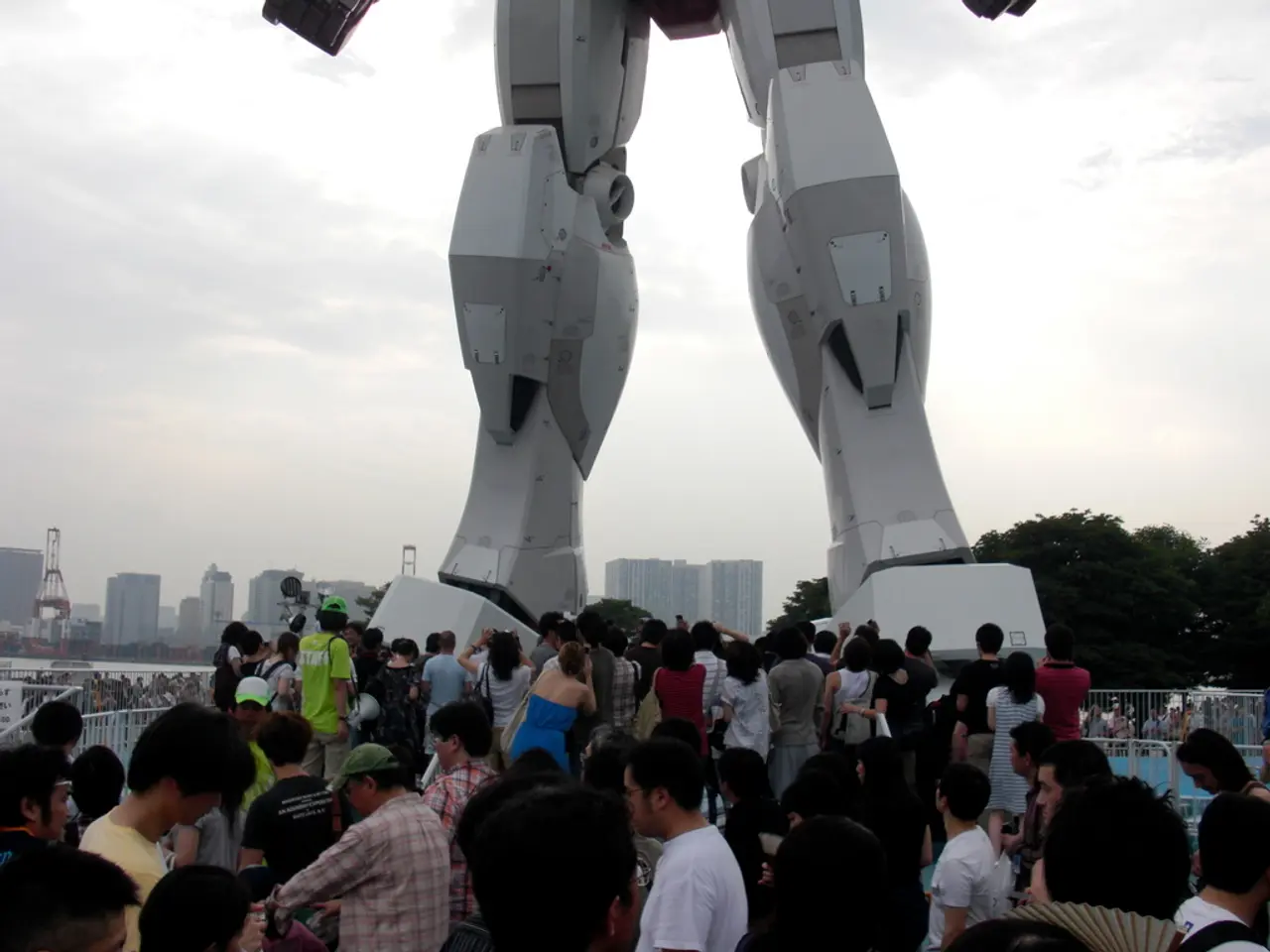China's humanoid robots triumphantly debut at the international AI Games competition
The World Humanoid Robot Games, held in Beijing, have become a landmark event, showcasing the latest advancements in artificial intelligence (AI) and robotics. Over 500 humanoid robots from more than 20 countries are participating in sports and skill competitions, such as running, soccer, martial arts, medicine sorting, and cleaning tasks [1][2][4].
Advancements in Robotics
These games highlight significant progress in robot design, motion control, balance, endurance, and task execution, fueled by AI algorithms enabling autonomous or semi-autonomous behaviors [1][3][4]. Robots demonstrate impressive capabilities in dynamic sports, like a 400-meter race, where they display speed, precision, and quick self-correction from falls and stumbles, reflecting sophisticated sensors and adaptive control systems [3].
Inclusion of practical job-related challenges (medicine sorting, handling cleaning materials) signals an increasing focus on robots' integration into everyday human environments and services [2][4].
Challenges Remain
Despite these advancements, robots still exhibit awkward movement and frequent falls, underscoring the complexity of replicating human-like biomechanics and real-time decision-making [2]. Precision in tasks such as ball passing in soccer remains limited, reflecting ongoing difficulties in coordination, fine motor skills, and real-time strategic interaction [2]. Battery life, energy efficiency, and the robustness of hardware under dynamic physical stresses are still limiting factors shaping robot design and performance in competitive conditions [4].
Practical Applications
The event serves as a testbed for embodied AI technologies that could translate into real-world service robots for healthcare, logistics, entertainment, and eldercare, addressing societal needs like aging populations, especially in countries like China investing heavily in robotics [2][4]. By trialing robots in physically demanding and complex task scenarios, engineers can iterate designs more rapidly, reducing product development risk and accelerating commercialization of AI-robotic solutions [2].
China's Investment in Robotics
China is investing billions of dollars in humanoids and robotics to address challenges like an ageing population and growing competition with the U.S. over advanced technologies [5]. The World Humanoid Robot Games are part of a broader trend of increased investment and interest in robotics in China [5]. Morgan Stanley analysts observed an increase in general public attendance to a recent robot conference, suggesting a growing interest in robotics in China [5].
High-Profile Robotics Events in China
The World Humanoid Robot Games are not the only recent high-profile robotics event staged by China. Other events include the world's first humanoid robot marathon, a robot conference, and the opening of retail stores dedicated to humanoid robots [6]. Many robots managed to right themselves independently during the games, earning applause from audiences. There were instances of robots crashing into each other and toppling over during football matches, and one robot collapsing mid-sprint during running events, causing gasps and cheers from spectators [6].
Notable private enterprises participating include China's Unitree and Fourier Intelligence [6]. Football matches in the games help train robots' coordination abilities, which could be useful for assembly line operations requiring collaboration between multiple units [6]. Participating teams are from countries like the United States, Germany, Brazil, and China [6].
In summary, the World Humanoid Robot Games function as both a showcase for cutting-edge humanoid robotics technology and a real-world laboratory, revealing present technical hurdles and potential application pathways for AI and robotics in society [1][2][3][4].
[1] https://www.reuters.com/technology/world-humanoid-robot-games-showcase-ai-robotics-advancements-china-2025-08-01/ [2] https://www.technologyreview.com/2025/08/01/1055416/world-humanoid-robot-games-showcase-ai-robotics-advancements-china/ [3] https://www.wired.com/story/world-humanoid-robot-games-ai-robotics-china/ [4] https://www.bbc.com/news/technology-58141441 [5] https://www.cnbc.com/2025/08/01/china-invests-billions-in-humanoids-and-robotics-to-address-ageing-population-and-tech-competition-with-us.html [6] https://www.bloomberg.com/news/articles/2025-08-01/china-stages-series-of-high-profile-robotics-events-including-world-humanoid-robot-games
- Robots demonstrating sophisticated performances in dynamic sports like running and soccer during the World Humanoid Robot Games underscores the potential of artificial intelligence and robotics to impact the world of sports.
- The World Humanoid Robot Games, both a showcase and real-world laboratory for humanoid robotics technology, indicate an increasing focus on integrating robots into everyday human environments, particularly in areas such as healthcare, logistics, and entertainment.




